The base model of the new Holden Astra is a bit like a very shiny, very new budget hotel. Sure, it looks great from outside, and the advertised prices seem tempting enough ($21,990 for the manual, $24,190 for auto), but once you actually open the door and step inside you instantly notice that some pretty vital stuff is missing.
In the case of a cheap hotel room, it might be the lack of towels that don't feel, and smell, like old socks, or the fact that there's no toilet and no running water, and someone seems to have sliced your bed in half.
With the Astra, it's more just the general bleakness of the interior - which clashes harshly with what is genuinely the prettiest version of this well-loved nameplate ever made - and a tangible lack of the kind of European quality Holden says it represents.
.jpg)
The Astra is a hugely important car for a brand that has culturally shifted itself from Ramsay Street - at the centre of our popular culture - to Hard Luck Street in Struggle Town as the era of local manufacturing, and vehicles designed for our conditions, comes to an end.
There's no doubt this car comes with plenty of Euro street cred, too, having won various awards in the UK, as well as the biggie; 2016 European Car of the Year.
Australians have long been fans of the Astra, but it remains to be seen whether the new car, particularly at this base-spec level, will find as many homes as its forebears. Perhaps, if Holden is lucky, people will be tricked by the sleight of hand that is calling your base car the R model.
Holden Astra 2017: R
| Engine Type | Turbo 4, 1.4L |
|---|---|
| Fuel Type | Premium Unleaded Petrol |
| Fuel Efficiency | 5.8L/100km (combined) |
| Seating | 5 |
| Price From | $10,340 - $14,190 |
| Safety Rating |
|
Is there anything interesting about its design?
8 / 10
The exterior design of the new Astra is perhaps its greatest selling point, and considering looks really are vital to why people buy cars this can only be good news.
This is certainly the best looking Astra ever, and a huge leap ahead from some its recent, sci-fi helmet-like designs.
Holden (or Germany's Opel, really, who designed it) describe the sharp yet flowing look as a "sculptural artistry meets German design" philosophy. It is easily as alluring as a VW Golf, and sits toughly on its 17-inch standard alloys (no one else offers so many inches at this price point), with a sporty front fascia and nice rear end.
The feel is sporty, something accentuated by the slight misleading R badge on the butt. For mine, the Mazda3 is still a slightly prettier, edgier car, but this is certainly the best looking Astra ever, and a huge leap ahead from some its recent, sci-fi helmet-like designs.
.jpg)
On the inside, the designers say their focus was, "reducing complexity and focusing clean interior lines" around the touch screen. Certainly there are plenty of familiar things about the displays for former Astra owners (I am one, the TS Astra was a ripper little car) to recognise and enjoy, but personally I found the lack of complexity more like a lack of effort.
One particular bugbear is the slightly pointless slot in front of the gear stick, which we can only guess is to slide your mobile phone into. Problem is, it's only big enough to fit the old iPhone 6 size, so if you've got a Plus model, or any Samsung at all, it's basically useless.
.jpg)
You could store brochures for other cars you could have bought in there, I guess.
How practical is the space inside?
7 / 10
The front pews, while not overly wondrous, are supportive enough and from the driver's seat it feels spacious and airy, a sensation brought back to Earth slightly by all that plain, shiny black plastic.
.jpg)
The rear is no Subaru Impreza, but it's comfortable enough for young children, and even patient teens, while the boot offers 360 litres (or 1210 with the seats folded down),
.jpg)
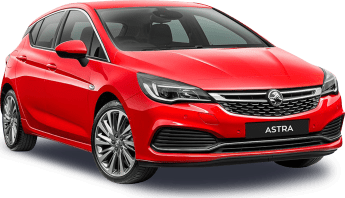
Does it represent good value for the price? What features does it come with?
8 / 10
Holden scoffs at the very idea of its Euro-quality car ever being a $19,990 offering, because as far it's concerned it's playing further up the field and, "taking the fight to the luxury (think German) brands."
So, we are encouraged to think of it as an absolute bargain at $21,990, against Mazda3 Maxx at $22,890, Volkswagen Golf 92TSI $22,840, Ford Focus Trend $23,990 and Toyota Corolla Ascent Sport at $21,210.
Keep in mind, though, that most people will opt for the automatic, which we're testing here (I'm willing to bet the manual is a better and more involving drive, but I'd put just as much money on the fact that it will make up 20 per cent of sales, or fewer) costs $24,190, so realistically it's going to be a $25K-plus proposition on the road.
Using the smallest engine of any of its direct competitors results, as you would expect, in a highly competitive fuel-economy figure.
For that money, Holden gives you hill start assist, rear-view camera and rear beepers, two ISOFIX anchor points, cruise control and speed limiter, 7.0-inch touchscreen with 'Holden MyLink', which supports DAB+, Bluetooth, Apple CarPlay and Android Auto, a strange central cupholder with one round hole and one square-ish one, and room for bottles in each door.
On paper, it sounds like a pretty good spec level, and it's certainly competitive. It's just that it doesn't feel that posh, an impression worsened by the plasticky-feel steering wheel.
It's almost worth spending the extra $1000 on the optional 'Driver Assist Pack', which includes all the safety tech - like AEB - we'd prefer was standard, as in, rain-sensing wipers and a proper, leather steering wheel.
What are the key stats for the engine and transmission?
6 / 10
The Astra's 1.4-litre turbo four-cylinder looks better on paper than it feels, with an impressive 110kW and 240Nm, handily besting competitors like the VW Golf 92TSI (92kW/200Nm), 1.8-litre Corolla Ascent Sport (103kW/173Nm) and even the 2.0-powered Mazda3 Maxx, which only has 200Nm thanks to its lack of turbo.
.jpg)
The 0-100km/h sprint is listed as "n/a", which is about right. You'll get to 100 when the car is good and ready, and if you're in a hurry you should have spent extra on the 1.6-litre version (which will get you there in 7.8 seconds).
How much fuel does it consume?
8 / 10
Using the smallest engine of any of its direct competitors results, as you would expect, in a highly competitive fuel-economy figure of 5.8L/100km. But while it is noticeably better than the 1.8-litre engines in the Toyota Corolla and (outgoing) Hyundai i30, it's only a whisker lower than the 2.0 in Mazda's 3, and is beaten (5.6L/100km) by VW's 92TSI Golf.
The CO2 figure of 135g/km is second best in its class (Golf wins again), but considerably better than most.
Impressively, the auto figure is exactly the same as the manual, with the self-shifting six-speeder helped by standard stop-start tech. It also runs on 91 RON, which should be a slight saving.
What's it like to drive?
6 / 10
We can definitely confirm the R badge, which looks very sexy on the Astra's pert rump, does not stand for Racy, as it usually does when found on a hatch (and very much so in the case of a VW Golf).
The overall impression of driving the Astra is of competence and adequacy, which is not quite as much as I was hoping for from such an awarded and lauded vehicle.
To be fair, I think the problem is the 1.4-litre engine, because it feels like a car, and a chassis in particular, that is crying out for more.
The six-speed automatic seems to make a real effort to disguise how hard the engine is working, but sadly ends up feeling, and sounding, a bit like a whiney old CVT.
The 1.4 is very much a good enough car, but you feel like it could be so much better.
My wife, on the other hand, who is actually shopping for a car in this bracket, loved it. She is, annoyingly, a long-time fan of underpowered and wheezy cars, and was thus instantly in love.
Holden's engineers were allowed to develop their own suspension tune, to make sure the Astra felt right on our harsher, coarse-chip surfaces, and they've done a good job. It's also reassuringly quiet inside.
The Astra feels reasonably involving around corners and rides with genuine Euro quality, and it feels genuinely classier than a Korean inside, but it's still bested, for driver involvement and interior excitement, by the Mazda3.
If it's something Euro-feel you're after, the VW Golf makes a very compelling case against the Astra, if you're the sort of person who can live with that badge and all the lying and cheating it represents.
I'm yet to drive a 1.6 version of the Holden Astra, but I'm willing to bet it's where the sweet spot of this particular range sits. The 1.4 is very much a good enough car, but you feel like it could be so much better.
Warranty & Safety Rating
What safety equipment is fitted? What safety rating?
7 / 10
The new Holden Astra comes with a maximum five-star ANCAP rating, six airbags as standard and, at base R level, you also get ESC (electronic stability control), ABS and traction control.
You have to step up to the 1.6-litre RS model to get 'Blind Spot Alert' as standard, as well as AEB (auto emergency braking), lane keep assist and forward collision alert with head-up warning, which is all part of the 'Holden Eye' forward-facing camera system. Or you can get all that stuff as part of the Driver Assist Pack, which also includes a leather steering wheel and rain-sensing wipers.
What does it cost to own? What warranty is offered?
8 / 10
Astra comes with a three-year/100,000km warranty and you also get lifetime capped-price servicing which amounts to $916 over the first four years. Standard service intervals are every nine months or 15,000km.
Verdict
Holden desperately needs the new Astra needs to be a success, but it comes into a market packed with excellent established players, and is about to be challenged by a new and much improved offering in the shape of the Hyundai i30.
While many people will walk straight past it to the Mazda3, those who want an air of Euro-chic will only be shopping this against the VW Golf.
From the outside, it's very much a fair fight, with an eye-catching and much-improved design. Its kudos from winning the 2016 European Car of the Year also means you should definitely have it on your list of comparison drives if you're after a hatch, but it does feel far more spartan than a Volkswagen inside, and slightly less exciting to drive.
The lack of fizz from the 1.4-litre entry-level model, and the slightly slurry transmission, are the problem here, although there's enough class and quality about the way it drives to suggest the 1.6-litre, higher-spec and higher-priced versions, would be a lot better.
Do you like the style of the new Holden Astra, or would you have a Mazda3 instead? Tell us what you think in the comments below.
Pricing Guides







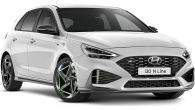















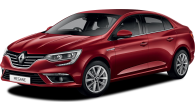








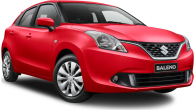





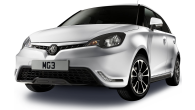


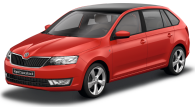

.jpg)


.jpg)

